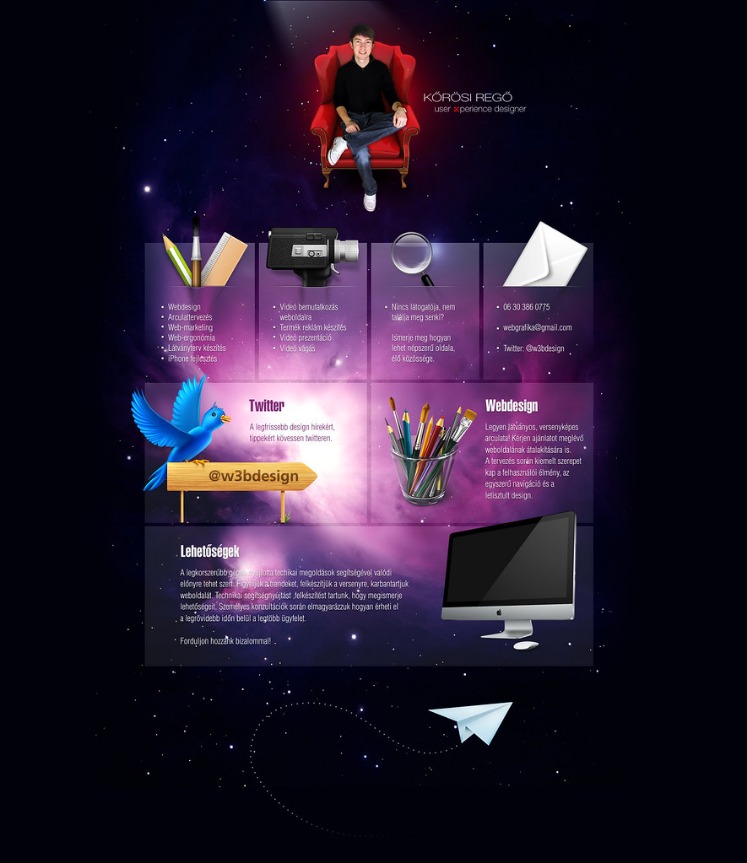Understanding the Fundamentals of Course Website Design
Creating an effective course website is essential for enhancing the learning experience and engaging students. Understanding the fundamentals of course website design involves exploring key elements such as user interface, content organization, and accessibility. By mastering these basics, educators can develop intuitive and attractive platforms that facilitate seamless navigation and foster student success.
Importance of User Experience (UX)
Understanding the fundamentals of course website design is essential for creating an effective and engaging educational platform. A well-structured website ensures that students can easily access course materials, navigate through lessons, and find essential resources without confusion. Key elements include clear navigation, organized content, and visually appealing layouts that facilitate learning.
The importance of user experience in course website design cannot be overstated. A positive UX leads to increased student satisfaction, better engagement, and improved learning outcomes. When students find a website intuitive and responsive, they are more likely to focus on the material rather than struggling with technical issues. Incorporating accessibility, mobile responsiveness, and quick loading times further enhances the overall user experience, making the course accessible to a broader audience.
Principles of Visual Design
Understanding the fundamentals of course website design is essential for creating an engaging and effective educational platform. A well-designed course website should prioritize clarity, accessibility, and usability to enhance the learning experience. This involves organizing content logically, providing easy navigation, and ensuring that students can find resources effortlessly.
The principles of visual design play a crucial role in achieving these goals. Effective use of color, typography, and layout can guide users through the site intuitively and make important information stand out. Balance and contrast help maintain visual interest while maintaining readability. Consistency in design elements creates a cohesive experience, allowing students to focus on learning without distractions.
Incorporating visual hierarchy, such as larger headings and emphasized key points, directs attention to essential content. Using whitespace strategically prevents clutter and makes the site feel open and inviting. Overall, applying these foundational design principles results in a course website that not only looks professional but also supports effective teaching and learning.
Accessibility Standards and Best Practices
Designing an effective course website requires a solid understanding of fundamental principles, accessibility standards, and best practices to ensure an engaging and inclusive learning experience for all users. A well-structured website should prioritize clear navigation, organized content, and adherence to accessibility guidelines to accommodate diverse learners.
Key considerations for course website design include:
- Ensuring intuitive navigation to help students find information quickly and easily.
- Organizing content with logical hierarchies, headings, and consistent layout conventions.
- Using clear, legible fonts and appropriate color contrasts to enhance readability.
- Incorporating multimedia elements thoughtfully, providing captions and transcripts for video and audio materials.
- Applying accessibility standards such as Web Content Accessibility Guidelines to support users with disabilities.
- Implementing responsive design to ensure compatibility across different devices and screen sizes.
- Providing alternative text for images and descriptive links to improve accessibility for assistive technologies.
- Testing the website with various tools and user groups to identify and resolve potential accessibility issues.
By focusing on these fundamentals, course website designers can create inclusive, user-friendly platforms that enhance the learning experience and meet widely recognized accessibility standards.
Planning Your Course Website
Creating an effective course website begins with careful planning to ensure it meets both instructional goals and student needs. A well-designed website serves as a central hub for resources, communication, and engagement, making the learning experience seamless and organized. Thoughtful planning allows educators to structure content logically, incorporate interactive elements, and choose the right tools to enhance instruction. By starting with a clear plan, you set the foundation for a successful and user-friendly online course platform.
Defining Goals and Audience
Defining clear goals and understanding your target audience are essential first steps in designing an effective course website. By establishing what you want students to achieve and how they will interact with the content, you can create a focused and user-friendly platform. Consider whether the primary goal is to provide foundational knowledge, facilitate active learning, or support assessments, and tailor your website’s features accordingly. Additionally, understanding your audience’s needs, technological skills, and preferences helps in choosing appropriate content formats and navigation structures. This thoughtful planning ensures the course website effectively supports learning objectives and enhances student engagement from the outset.
Content Structure and Organization
Effective planning of your course website involves careful consideration of content structure and organization to enhance the learning experience. Begin by outlining the key topics and learning objectives, then organize them into logical modules or units that follow a progression from foundational concepts to more advanced topics. Use clear and descriptive headers to segment different sections, making navigation intuitive for students. Incorporate a consistent layout throughout the site, such as a homepage that provides an overview and course roadmap, followed by detailed pages for each module or lesson. Additionally, integrate multimedia resources like videos, slides, and readings in a way that complements the textual content and caters to diverse learning styles. Ensuring a clean, user-friendly interface with easy access to assignments, discussion forums, and assessment tools will facilitate student engagement and promote an organized learning environment. Regularly review and update the content organization based on feedback to maintain clarity and relevance throughout the course duration.
Selecting the Right Platform and Tools
Creating an effective course website begins with careful planning to ensure it meets the needs of both instructors and students. Consider the course objectives, target audience, and the types of content you will deliver, such as videos, readings, and assessments. A clear structure and intuitive navigation are essential for enhancing user experience and encouraging engagement. Selecting the right platform and tools is a critical step in this process. It is important to evaluate options based on ease of use, customization capabilities, integration with other systems, and cost. Popular Learning Management Systems (LMS) like Moodle, Canvas, or proprietary platforms such as Teachable and Thinkific offer diverse features suited for different instructional styles. Additionally, choosing tools that support multimedia content, interactive assignments, and communication channels can significantly enrich the learning experience. Ultimately, the right combination of platform and tools aligns with your course goals, allows seamless content delivery, and fosters active learning and student interaction.
Designing the User Interface
Designing the user interface for a course website is a critical step in creating an engaging and effective learning environment. A well-crafted interface enhances usability, making it easy for students to navigate and access the materials they need. By focusing on clarity, simplicity, and intuitive layout, designers can ensure that learners remain engaged and motivated throughout their educational journey.
Navigation and Menu Design
Designing the user interface, navigation, and menu layout for a course website is crucial for providing an intuitive and engaging learning experience. A well-structured interface helps students easily access course materials, assignments, and resources without confusion or frustration. Clear visual hierarchy, consistent layout, and user-friendly elements are essential components of effective UI design.
Navigation should be simple and logical, guiding users seamlessly through the website. Using a main menu with clearly labeled sections such as Home, Course Content, Assignments, Discussion, and Resources allows learners to find what they need quickly. Dropdown menus or sidebars can organize subcategories without cluttering the main navigation bar.
Menu design plays a significant role in enhancing usability. It’s important to ensure that menus are accessible from all pages, providing quick access to key features. Responsive menus that adapt to different devices, like tablets and smartphones, improve accessibility and user experience across platforms. Incorporating icons and visual cues can also assist navigation, making the interface more intuitive for users of all levels.
Layout and Grid Systems
Designing the user interface for a course website involves creating an intuitive and engaging layout that enhances the learning experience. A well-structured interface guides students seamlessly through course materials, assignments, and communication tools. When developing the layout, it is essential to prioritize clarity, simplicity, and accessibility to accommodate diverse users.
Grid systems play a crucial role in maintaining consistency and balance throughout the website design. Utilizing a grid allows for aligning elements neatly, ensuring that content is organized logically and visually appealing. Vertical and horizontal grids help create a cohesive structure, making navigation easier and reducing visual clutter.
Responsive design is key for a course website to function effectively across various devices and screen sizes. Combining flexible grid systems with scalable layouts ensures that the interface adapts smoothly, offering an optimal experience whether accessed on desktops, tablets, or smartphones. Overall, thoughtful UI, layout, and grid system design significantly contribute to an effective and user-friendly course website.
Color Schemes and Typography
Designing the user interface for a course website involves creating an intuitive and engaging environment that facilitates learning and easy navigation. Prioritizing a clean layout with clear menus and minimal clutter helps users focus on the content. Consistency in design elements ensures a seamless experience across different pages and devices. Incorporating visual cues and interactive components enhances user interaction and engagement.
Choosing an appropriate color scheme is essential for setting the tone and improving readability. Utilizing a primary color palette that aligns with the course branding can create a cohesive look, while complementary colors can highlight important information or calls to action. Light backgrounds with dark text are generally easier to read, and subtle accents can guide users through the site without overwhelming them. It is also vital to consider accessibility, ensuring sufficient contrast for users with visual impairments.
Typography plays a crucial role in enhancing readability and establishing a visual hierarchy. Selecting clear, legible fonts for body text, such as sans-serif typefaces, aids in quick comprehension. Headings and titles should use fonts that stand out but remain harmonious with the overall design. Varying font sizes and weights helps organize information and directs attention to critical elements. Consistent use of typography styles across the site maintains a professional appearance and improves user experience.
Developing Course Content for the Web
Creating effective course content for the web is essential for engaging students and facilitating learning. Well-designed course websites serve as a central hub for materials, multimedia, and interactive activities, making education accessible and convenient. Developing compelling and organized content ensures students can easily navigate the site and absorb valuable knowledge efficiently.
Text and Multimedia Integration
Developing course content for the web requires careful integration of text and multimedia elements to enhance learner engagement and understanding. Effective course website design should prioritize clarity, accessibility, and interactivity to facilitate seamless learning experiences. Combining textual information with images, videos, and audio components helps cater to diverse learning styles and makes complex concepts more digestible. Organizing content logically using headings, bullet points, and visual cues ensures that students can easily navigate and locate relevant materials. Incorporating multimedia elements thoughtfully prevents information overload and maintains learner interest. Overall, a well-balanced blend of text and multimedia enriches the curriculum, fostering a dynamic and interactive online learning environment that encourages active participation and comprehension.
Creating Engaging and Interactive Elements
Developing course content for the web requires a focus on clarity, engagement, and accessibility to enhance the learning experience. Well-structured text, combined with relevant visuals, helps students grasp concepts effectively. Incorporating multimedia elements such as videos, images, and audio can diversify the presentation and cater to different learning styles. Interactive components like quizzes, drag-and-drop activities, and discussion forums foster active participation, making the course more dynamic and inviting.
Creating engaging and interactive elements involves thoughtful integration of technologies and design principles. Using JavaScript libraries and frameworks can introduce animations, real-time feedback, and interactive simulations that captivate learners. Clear navigation, consistent layout, and visual cues guide users seamlessly through the content, encouraging exploration and repeated engagement. Moreover, incorporating gamification elements like badges, scores, and leaderboards can motivate learners to participate actively and complete the course successfully.
Ensuring Content Accessibility
Creating accessible course content on a website is essential to ensure all learners can navigate, understand, and engage with the material effectively. Designing with accessibility in mind involves using clear and concise language, organizing information logically, and incorporating features that support diverse needs. This includes providing alternative text for images, ensuring sufficient color contrast, and using headings appropriately to facilitate easy navigation for users relying on screen readers.
Additionally, multimedia elements such as videos and audio should include captions and transcripts to cater to learners with hearing impairments. Interactive components, like quizzes and assignments, need to be compatible with keyboard navigation and assistive technologies. Regularly testing the website with accessibility tools helps identify and address potential barriers. Ultimately, developing course content with accessibility as a priority not only broadens the reach of educational resources but also enhances the overall user experience for all students.
Implementing Technical Features
Implementing technical features is a crucial aspect of designing an effective course website. Proper integration of functionalities such as navigation menus, interactive elements, and multimedia components enhances the user experience and supports the learning process. A well-structured website with seamless technical features ensures that students can easily access resources, participate in activities, and engage with content in a dynamic and accessible environment.
Responsive Design for All Devices
Implementing technical features with responsive design is essential for creating an effective course website that functions seamlessly across all devices. Ensuring accessibility and ease of use enhances the learning experience for students regardless of whether they are accessing the site from a desktop, tablet, or smartphone.
- Use flexible grid layouts that adapt to different screen sizes by employing CSS techniques like Flexbox or CSS Grid.
- Implement media queries to adjust styling, font sizes, and layout according to various device widths and orientations.
- Optimize images and media files for faster loading times on all devices without sacrificing visual quality.
- Ensure that navigation menus are mobile-friendly, often utilizing collapsible menus or icons for compact display.
- Test the website across multiple devices and browsers to identify and resolve responsiveness issues promptly.
- Incorporate touch-friendly elements with appropriately sized buttons and links to improve usability on touch devices.
- Utilize scalable vector graphics (SVGs) for icons and illustrations to maintain sharpness on screens with different resolutions.
Learning Management System (LMS) Integration
Implementing technical features such as Learning Management System (LMS) integration is a crucial aspect of designing an effective course website. Seamless LMS integration allows for streamlined access to course materials, efficient tracking of student progress, and simplified content management. To achieve this, developers should choose a compatible LMS platform and utilize its APIs to connect with the course website seamlessly. Ensuring a responsive and user-friendly interface that supports single sign-on (SSO) enhances the user experience by enabling students and instructors to access all necessary resources without multiple logins. Additionally, integrating features like quiz modules, assignment submissions, and gradebooks through LMS APIs can improve the efficiency of course administration. Proper security measures should be implemented to protect sensitive data during the integration process. Overall, effective LMS integration enriches the functionality of the course website, making it a comprehensive platform for teaching and learning.
Tracking and Analytics Capabilities
Implementing technical features and tracking analytics capabilities is essential for optimizing a course website to enhance user experience and measure success. Integrating features such as interactive quizzes, discussion forums, and multimedia content requires careful planning and compatibility testing across different devices and browsers. Utilizing tracking tools like Google Analytics or other analytics platforms enables educators to gather data on student engagement, popular content, and navigation patterns. These insights help identify areas for improvement, customize learning experiences, and ensure that the website aligns with learners’ needs. Ensuring seamless integration of tracking codes and maintaining data privacy standards are critical components of effective analytics implementation. Regular monitoring and analysis of collected data facilitate continuous website optimization, ultimately fostering a more effective and engaging online learning environment.

Testing and Optimizing the Website
Testing and optimizing a website are crucial steps in creating an effective and user-friendly course website. These processes ensure that the website functions correctly, loads quickly, and provides an engaging experience for visitors. By systematically evaluating and refining various elements, educators and developers can enhance accessibility, usability, and overall performance, leading to higher student engagement and better learning outcomes.
Usability Testing
Testing and optimizing a course website is essential to ensure an effective and user-friendly learning experience. Usability testing helps identify potential issues that learners might face, such as confusing navigation, slow load times, or unclear content layout. By gathering feedback from actual users, designers can make informed adjustments to improve accessibility, clarity, and overall functionality. Regularly conducting usability testing allows continuous optimization, ensuring the website remains intuitive and engaging for students. Implementing these practices ultimately enhances learner satisfaction, promotes better engagement, and supports successful course outcomes.
Performance Optimization
Testing and optimizing a course website is essential to ensure a seamless user experience and effective learning environment. Regular testing helps identify usability issues, broken links, and loading problems that can hinder student engagement. Performance optimization involves enhancing website speed by optimizing images, leveraging browser caching, and minimizing code. Implementing responsive design ensures the site functions well across all devices, improving accessibility for users. Analyzing user behavior using analytics tools can provide insights into navigation patterns, enabling targeted improvements. Continuously updating content and maintaining a clean, straightforward interface also contribute to better overall performance and user satisfaction in course website design.
Collecting User Feedback
Testing and optimizing a course website is essential to ensure it provides a seamless and engaging user experience. Regular testing helps identify usability issues, broken links, or loading problems that could hinder learners’ progress. Implementing A/B testing allows designers to compare different layouts or features, determining which options improve user engagement and satisfaction. Additionally, analyzing website analytics offers insights into visitor behavior, helping to refine content placement and navigation structure. Collecting user feedback through surveys, comment sections, or direct interviews provides valuable perspectives on what learners find effective or confusing, guiding continuous improvements. Prioritizing ongoing testing and feedback collection ensures the course website remains user-friendly, accessible, and aligned with learners’ needs, ultimately enhancing learning outcomes and satisfaction.
Launch and Maintenance
Launch and maintenance are crucial phases in the development of a course website, ensuring that it remains accessible, functional, and engaging for users over time. Proper planning during launch helps in providing a seamless experience for students, educators, and administrators, while ongoing maintenance addresses updates, security, and feedback to enhance the site’s effectiveness. A well-managed launch coupled with consistent maintenance lays the foundation for a successful and sustainable digital learning platform.
Deployment Procedures
Launch and maintenance are critical phases in the lifecycle of a course website to ensure its ongoing functionality, security, and relevance. Proper deployment procedures help deliver a seamless experience for users, while maintenance ensures the site remains up-to-date and free of issues over time.
Deployment Procedures for a Course Website:
- Prepare the Hosting Environment: Select a reliable hosting provider and configure server settings suitable for the website’s technology stack.
- Code Deployment: Transfer website files and databases to the live server using version control systems and deployment tools.
- Testing: Conduct thorough testing in the live environment to identify and resolve any deployment issues, including broken links or missing files.
- Configure Domain and SSL: Set up the domain name and security certificates to ensure secure and accessible browsing.
- Go Live: Make the website accessible to users by switching DNS records or activating the website on the server.
Ongoing Maintenance Activities:
- Content Updates: Regularly update course materials, announcements, and resources to keep the content current.
- Technical Monitoring: Monitor server performance, uptime, and error logs to detect and address technical problems promptly.
- Security Updates: Install patches and updates for the website platform, plugins, and server software to protect against vulnerabilities.
- Backup Strategies: Implement regular backups of the website and databases to prevent data loss.
- User Support and Feedback: Provide support channels for users and implement feedback to enhance website usability.
Regular Updates and Content Management
Effective course website design requires careful planning of launch and maintenance strategies to ensure ongoing user engagement and system stability. Launching a course website involves thorough testing, deployment, and initial promotion to attract students. Once live, consistent maintenance is essential to address technical issues, update content, and enhance user experience.
Regular updates are vital for keeping the course content current and relevant, which encourages repeat visits and improves learning outcomes. Incorporating new materials, fixing bugs, and refreshing the interface contribute to a dynamic and professional appearance. Content management should be streamlined through organized structures and user-friendly interfaces, allowing instructors to easily upload, modify, or remove materials without technical hurdles.
Overall, a successful course website hinges on meticulous launch procedures, ongoing maintenance, timely content updates, and efficient content management practices. This ensures the platform remains secure, engaging, and a valuable resource for learners throughout its lifecycle.
Ensuring Security and Data Privacy
Launching and maintaining a course website requires careful planning to ensure ongoing security and data privacy. During the launch phase, it is essential to implement robust security measures such as SSL certificates, strong authentication protocols, and regular vulnerability assessments to protect user information. Ongoing maintenance involves keeping the platform updated with the latest software patches, monitoring for suspicious activity, and performing routine backups. To guarantee data privacy, it is important to enforce strict access controls, anonymize sensitive data when possible, and comply with relevant regulations such as GDPR or FERPA. By prioritizing security and privacy, a course website can provide a safe and trustworthy environment for learners and educators alike.





